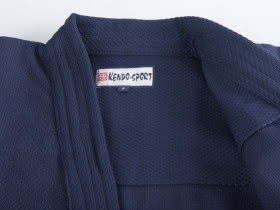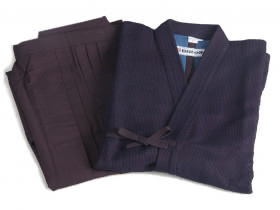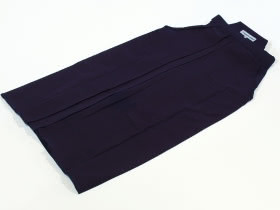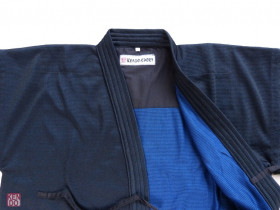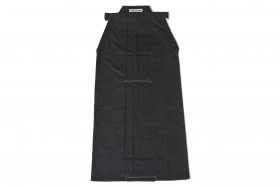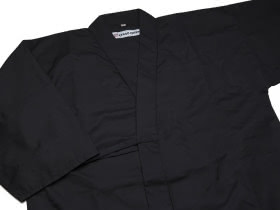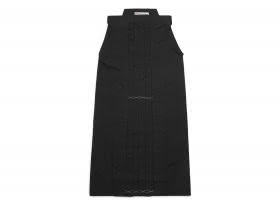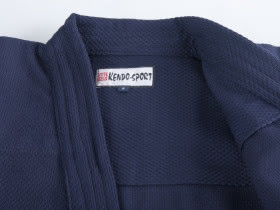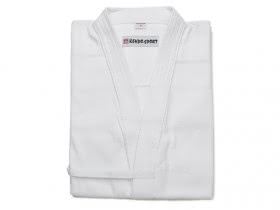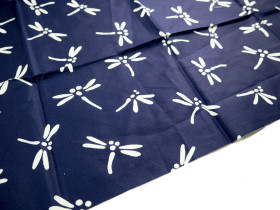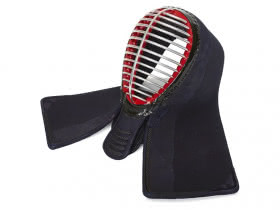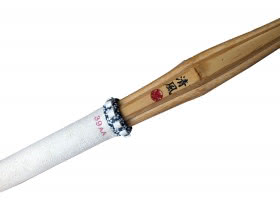Products description
Due to the carefull workmanship of the selected materials, even our beginners set provides a great sweat absorption and guaranties a high stability and durability. The single-layer Gi is 100% made of cotton; the Hakama is made of tetron.
Gi blue Standard: This single-layer Keiko Gi is a thick jacket, made of 100% absorbent cotton. It is dyed indigo-blue. The shoulder area of the Gi is reinforced with a second layer of material. When training intensively many have a problem with the belts of the Gi loosening. That's why we have had the belts for our Gis produced from 100% cotton (#10,000 quality). This firm cotton holds the knots better and prevents them from loosening during training.
Tip:
New clothes lose colour while washing and in the training. This is a sign of a high qualitied clothes. Our clothes in Deluxe Quality are dyed with natural inidigo dyes according to the traditional japanese style.
Hakama blue tetron: Hakama blue made of 100% Tetron. Tetron is a new high quality plasic fibre, specifically designed to keep low the static charge of the fibre. This way the agglutination of the clothes, known from plasic fibres, can be avoided.
Our Hakama Standard Blue made of Tetron is now even easier to care for. The pleats are sewn into the inside of the hakama along the entire length.
As you can see in the picture, the discreetly thin seam runs very close to the folded edges of the hakama.
This makes the pleats easier to maintain even after washing. Especially recommended for beginners.
What you previously only got for an additional charge is now included in the price.
The processing time for alteration requests on clothing, such as shortening the sleeves of a gi or shortening the length of a hakama, is approximately
1 to 2 weeks.
If you would like alterations to be made to the garments, please enter the new measurements in the ‘Comments’ field during the ordering process.
Available sizes:
|  |
 |
Important: Please measure your legs before purchase. When wearing the Hakama, the lower edge should rest at the ankle and the upper edge of the abdominal belt should lie a few centemeters above the belly button. The length of the Hakama can thus be a bit longer than this distance. [click here]
If you have any questions, just send us an e-mail. We will be happy to help you.Video:
Care instruction
Washing:
You can wash both Hakama and Gi by hand in water at a very low temperature. [wash]
Tip: In order to keep the folds of the Hakama after washing it, just follow this procedure.
Before washing, fold the Hakama (see how here). Put it in the tub and wash it by trampling on it like traditional winepresses do. Once it is done, carefully open the folds and hang it on a line to dry. Take it off before it is completely dry and fold it back, then press it with books and leave it to dry. It will then look like perfectly ironed!
Find further tips at our Kendoinfothek:
Hakama - find the right lenght: [more]
Folding the Hakama: [more]
Putting on the Hakama: [more]
Folding the Gi: [more]
Putting on the Gi: [more]
Still having some questions?
Don’t hesitate to contact us by writing us an email: [more]
Manufacturer:
kendo-sport
Steinbücheler Weg 80
51061 Köln
Deutschland
E-Mail: info@kendo-sport.de






